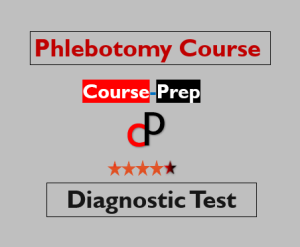Phlebotomy Technician Diagnostic Test 2024 Review Test Prep. The Certified Phlebotomy Technician (CPT) online course is conducted by various organizations for example. ACA, AAH, AMT, ASPT, NCCT, NHA, NPA, etc. You can try our Phlebotomy Technician Diagnostic Test review mock test.
Phlebotomy Technician Diagnostic Test
The practice of phlebotomy continues to this day; however, principles and methods have improved dramatically. Today, phlebotomy is performed to:
• Obtain blood for diagnostic purposes and to monitor prescribed treatment
• Remove blood for transfusions at a donor center
• Remove blood for therapeutic purposes, such as treatment for polycythemia, a disorder involving the overproduction of red blood cells Phlebotomy is primarily accomplished by one of two procedures:
• Venipuncture, which involves collecting blood by penetrating a vein with a needle and syringe or other collection apparatus
• Capillary puncture, which involves collecting blood after puncturing the skin with a lancet

